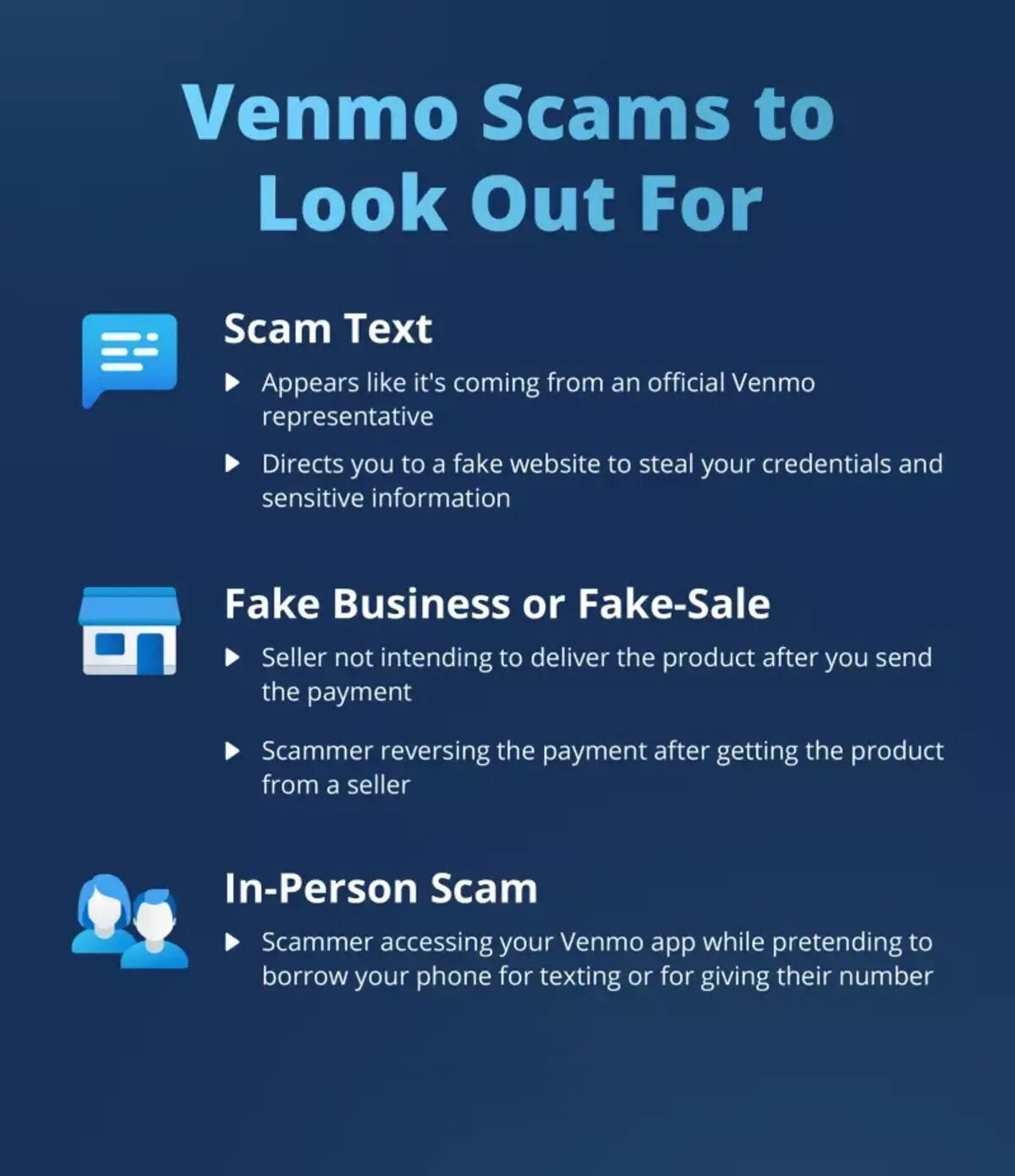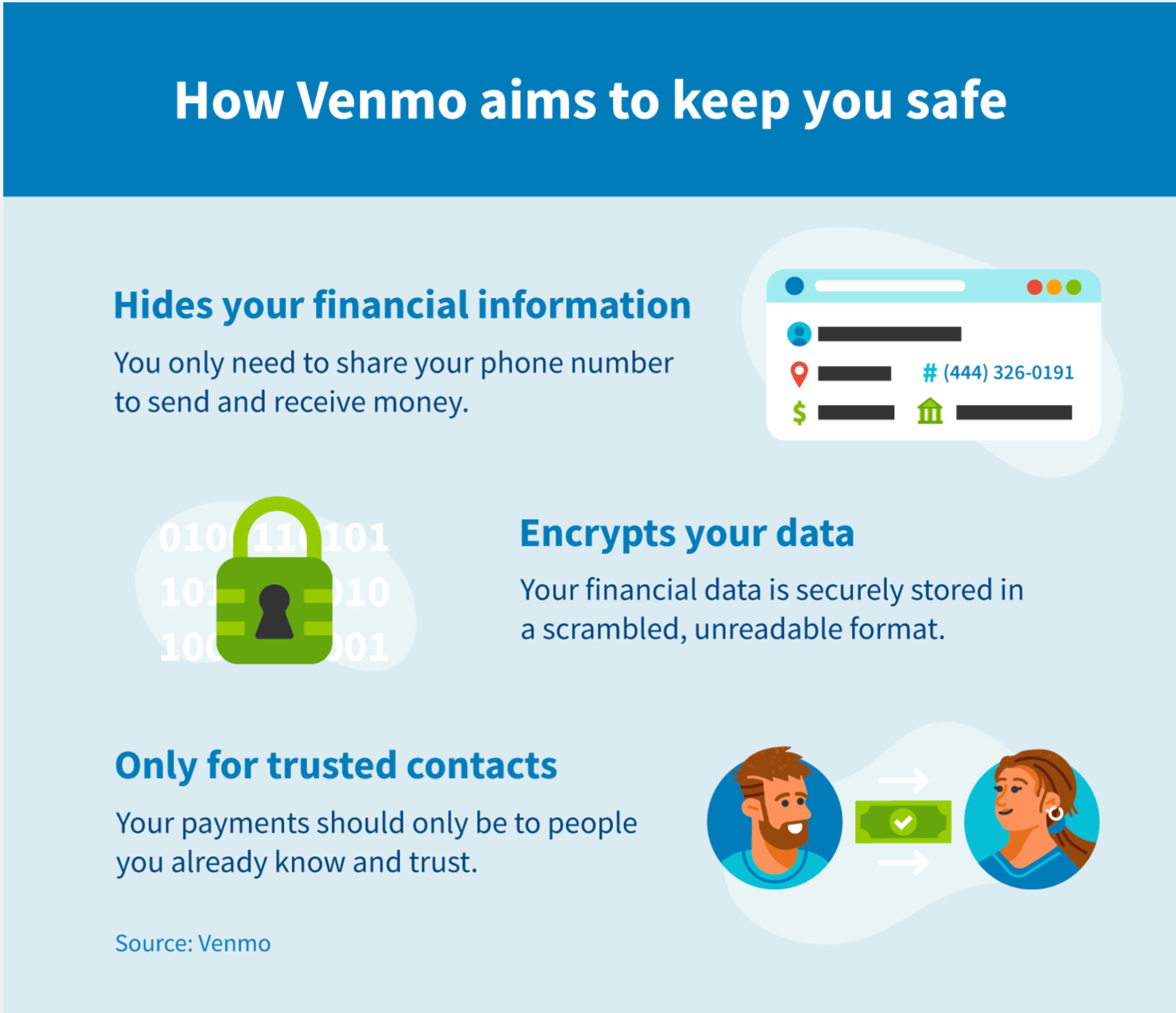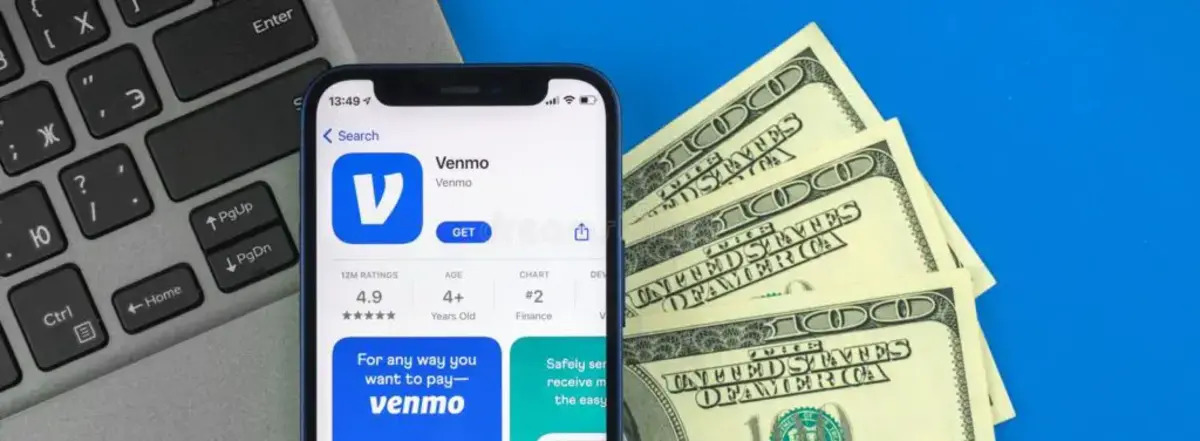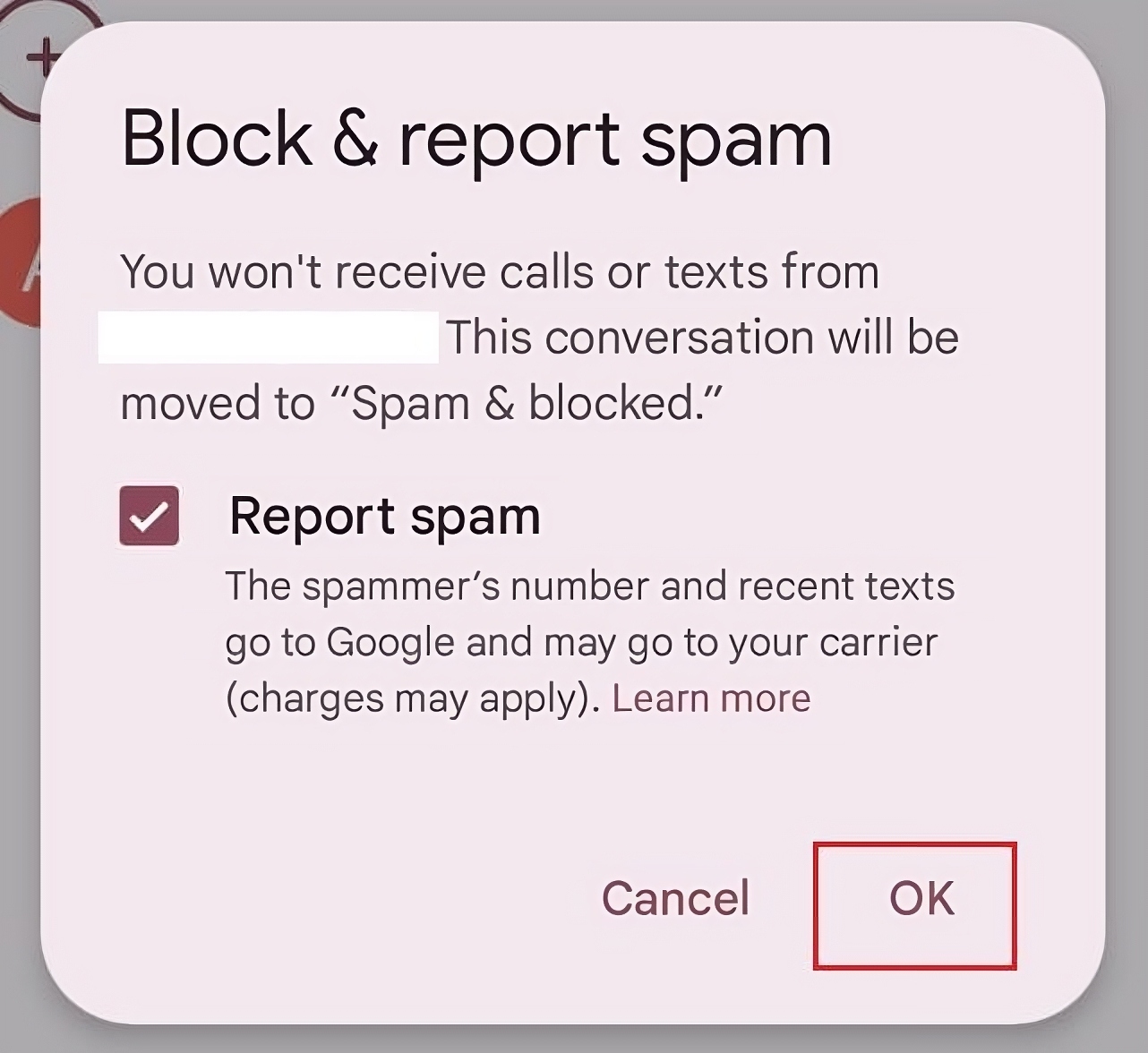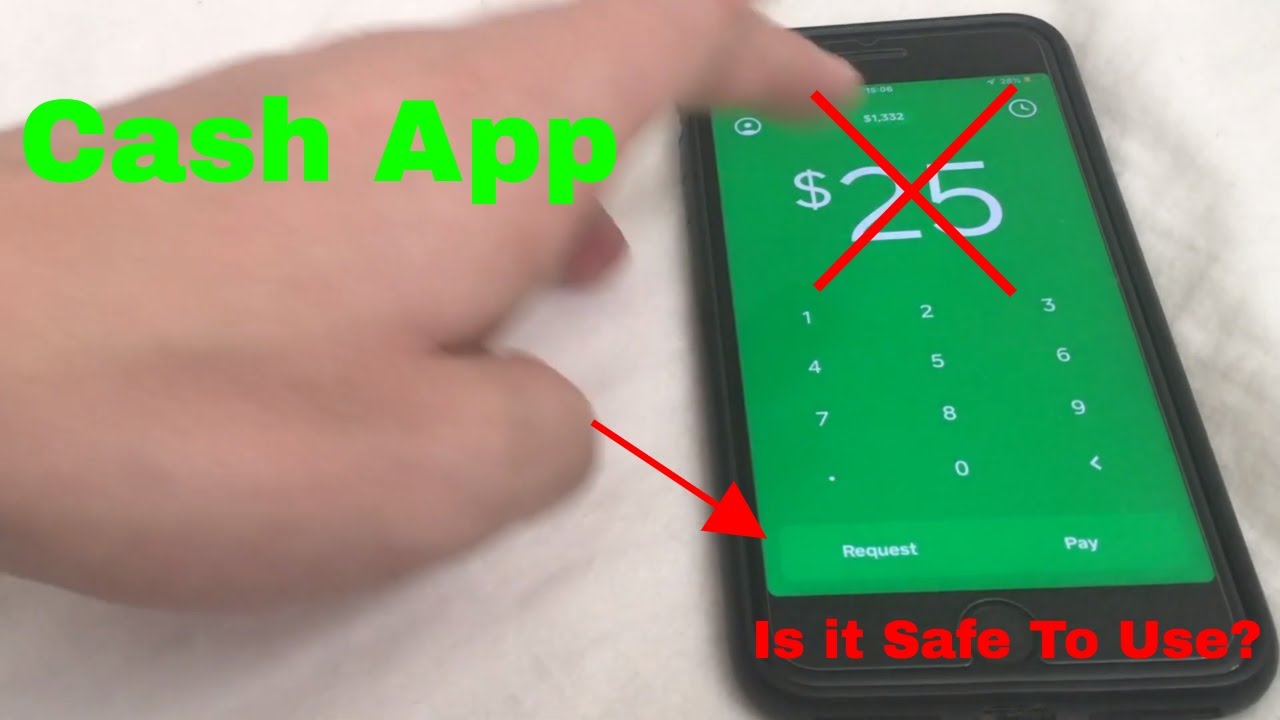Introduction
Venmo has become a go-to platform for conveniently sending and receiving money between friends and family. With its user-friendly interface and widespread adoption, Venmo has revolutionized the way we handle financial transactions. However, as with any online platform, scammers have found ways to exploit unsuspecting Venmo users.
In this article, we will explore the world of Venmo scams and how to protect yourself from falling victim to fraudulent activities. Whether you use Venmo for personal or business transactions, being aware of the warning signs and taking necessary precautions is essential to safeguarding your hard-earned money.
Understanding the methods scammers employ and the red flags to watch out for is the first step in protecting yourself while using Venmo. We will delve into the most common scams targeting Venmo users and explore ways to identify them before it’s too late. The more knowledge you have about these fraudulent practices, the better equipped you will be to avoid becoming a victim.
In case you do find yourself caught in a scam on Venmo, it’s crucial to know the steps you can take to minimize the damage and potentially recover your funds. From contacting Venmo support to reporting the scam to the appropriate authorities, we’ll guide you through the necessary actions to take when you’ve been scammed.
Additionally, we will discuss the importance of gathering evidence for a dispute and how to effectively initiate a dispute on the Venmo platform. Working closely with Venmo support to provide all necessary information can significantly increase your chances of recovering the money lost in a scam.
Finally, we will touch on preventive measures to secure your future transactions on Venmo. By implementing strategies to protect yourself and staying vigilant, you can greatly reduce the risk of falling into the trap of scammers in the future.
So, let’s dive into the world of Venmo scams and learn how to keep our money safe while enjoying the convenience of this popular digital payment platform.
Understanding Venmo Scams
Venmo scams are fraudulent activities carried out by individuals or groups to exploit unsuspecting Venmo users and steal their money. These scams can take various forms, but they ultimately aim to deceive users into sending money to scammers under false pretenses.
One of the most common types of Venmo scams is the “buying/selling” scam. Scammers pose as legitimate sellers, offering desirable goods or services at attractive prices. They convince buyers to send them money through Venmo, promising to deliver the item or provide the service. However, once the money is sent, the seller disappears, leaving the victim without their money or the promised item.
Another common scam is the “rental” scam. Scammers pose as landlords or property managers, advertising rental properties at lower prices to attract potential tenants. They request the first month’s rent and security deposit to be paid through Venmo, but once the money is sent, the scammer vanishes, leaving the victim without a place to rent or any chance of recovering their money.
Furthermore, there are instances where scammers exploit the trust shared between friends or family members on Venmo. They create fake accounts impersonating someone known to the victim and use emotional manipulation or urgency to request immediate money transfers. These scammers take advantage of the victim’s trust and familiarity to convince them to send money without verifying the authenticity of the request.
It’s essential to be aware of the warning signs of a Venmo scam. These can include deals that seem too good to be true, requests for immediate payments, unusual or suspicious account activity, and sellers or landlords who refuse to meet in person or provide detailed information about the transaction.
Moreover, scammers may attempt to trick users through phishing emails or texts, claiming to be from Venmo support. They often request personal information, passwords, or ask users to click on malicious links that can compromise their accounts. It’s important to remember that Venmo support will never ask for your password or personal information in such communication.
To protect yourself from Venmo scams, it is crucial to exercise caution and skepticism when engaging in transactions. Always verify the legitimacy of sellers and landlords, double-check requests from friends or family members, and be cautious of unsolicited communications that seem suspicious.
By understanding the various scams targeting Venmo users and being vigilant of warning signs, you can greatly reduce the risk of falling victim to fraudulent activities. In the following sections, we will discuss protective measures to shield yourself from scammers and steps to take if you’ve been scammed on Venmo.
Warning Signs of a Scam
Recognizing the warning signs of a Venmo scam is critical in protecting yourself from falling victim to fraudulent activities. By being aware of these red flags, you can identify potential scams before it’s too late. Here are some common warning signs to watch out for:
- Unrealistic deals: Be cautious of deals that seem too good to be true. Scammers often lure victims with exceptionally low prices or offers that are too good to pass up. If something seems too good to be true, it probably is.
- Urgency: Scammers may create a sense of urgency to pressure you into making a quick decision. They often emphasize limited availability or time-sensitive offers to prevent you from taking the necessary time to verify the transaction.
- Lack of transparency: If a seller or landlord refuses to provide detailed information or evades questions about the transaction terms, it may be a sign of a scam. Legitimate sellers and landlords are typically transparent and open to providing all necessary information.
- Suspicious account activity: Keep an eye out for any unusual or suspicious activity on an account. This can include multiple transactions to different recipients within a short period, frequent changes in account information, or unfamiliar contacts appearing in your friend list.
- Requests for immediate payments: Scammers often pressure victims to make immediate payments without giving them time to think or verify the legitimacy of the transaction. Genuine sellers and landlords understand the need for adequate review and consideration before making a payment.
- Unverified requests from friends or family: If you receive a payment request from a friend or family member that seems out of the ordinary or unexpected, it’s essential to verify the authenticity of the request outside of Venmo’s messaging system. Scammers can create fake accounts impersonating someone you know to trick you into sending money.
- Phishing attempts: Be cautious of phishing attempts through emails or text messages claiming to be from Venmo support. These messages often request personal information, passwords, or ask recipients to click on suspicious links. Remember that Venmo support will never ask for your password or personal information through these communication channels.
By staying vigilant and recognizing these warning signs, you can protect yourself from falling victim to Venmo scams. If you encounter any of these red flags, it’s crucial to proceed with caution and take additional steps to verify the legitimacy of the transaction before proceeding.
How to Protect Yourself from Scammers
Protecting yourself from scammers on Venmo requires a combination of awareness, vigilance, and implementing preventive measures. By following the tips below, you can significantly reduce the risk of becoming a victim of fraudulent activities:
- Verify the authenticity of sellers and landlords: Before conducting any transaction, carefully research the seller or landlord. Look for reviews, contact information, and a legitimate online presence. Don’t hesitate to ask for additional information or proof of identity to ensure their legitimacy.
- Stay cautious of unsolicited communication: Be wary of unsolicited messages, emails, or phone calls from individuals claiming to be Venmo support or offering suspicious deals. Venmo support will never contact you out of the blue asking for personal information, passwords, or initiating transactions.
- Control your privacy settings: Review and adjust your privacy settings on Venmo to limit the visibility of your transactions and personal information. Set your account to private to minimize the chances of scammers targeting you based on your public activity.
- Use strong and unique passwords: Protect your Venmo account by using a strong and unique password. Avoid using easily guessable information and consider utilizing a password manager to generate and securely store your passwords.
- Enable two-factor authentication: Add an extra layer of security to your Venmo account by enabling two-factor authentication. This will require a second verification step, such as a code sent to your mobile device, to access your account.
- Verify requests for money: If you receive a payment request from a friend or family member, take the time to verify it outside of Venmo’s messaging system. Contact the person through a separate communication channel to confirm the request’s authenticity before proceeding with the transaction.
- Regularly review your account activity: Regularly monitor your Venmo account for any suspicious activity. Report any unauthorized transactions or unusual account behavior to Venmo support immediately.
- Educate yourself about common scams: Stay informed about the latest scams targeting Venmo users. Be proactive in researching and understanding the tactics scammers use to manipulate unsuspecting individuals. This knowledge will help you identify potential scams and protect yourself accordingly.
Remember, prevention is key when it comes to protecting yourself from scammers on Venmo. By adopting these preventive measures and staying vigilant, you can safeguard your funds and have peace of mind while using the platform for your financial transactions.
Steps to Take if You’ve Been Scammed on Venmo
Discovering that you have been scammed on Venmo can be a frustrating and alarming experience. However, it’s important to take immediate action to minimize the damage and potentially recover your funds. Here are the steps you should take if you’ve been scammed on Venmo:
- Pause all transactions: As soon as you realize you’ve been scammed, pause all transactions on your Venmo account. This prevents any further unauthorized transactions from taking place.
- Contact Venmo support: Reach out to Venmo support immediately to report the scam and seek their assistance. You can contact them through the Venmo app or website to explain the situation and provide them with any relevant details and evidence.
- Document all information: Gather and document all information related to the scam. This includes transaction history, messages or communication with the scammer, proof of payment, and any other evidence that can support your case.
- Report the scam to the appropriate authorities: Contact your local law enforcement agency and file a report about the fraudulent activity. Provide them with all the details and evidence you have gathered. This step is crucial in pursuing legal action against the scammer.
- Cooperate with Venmo support: Work closely with Venmo support during their investigation process. Respond promptly to their requests for additional information or documentation. Provide them with all the evidence you have gathered to strengthen your case.
- Monitor your accounts: Regularly monitor all your financial accounts associated with Venmo for any suspicious activity. Report any unauthorized transactions or account breaches immediately to the respective financial institutions.
- Be cautious of recovery scams: Unfortunately, scammers may attempt to prey on victims again by offering to help recover their lost money. Be wary of any unsolicited offers or requests for additional payment in exchange for promised recovery. Stick with the official channels, such as Venmo support and law enforcement, for assistance.
- Share your experience: Warn others about your experience to prevent them from falling victim to similar scams. Share your story on social media platforms, online forums, or any other relevant platforms to raise awareness and help others stay safe while using Venmo.
Remember, recovering funds lost to scams is not always guaranteed. However, by taking these steps promptly and providing all necessary information, you increase the chances of potential recovery and help protect others from falling victim to the same scam.
Contacting Venmo Support
If you have been scammed on Venmo or encounter any suspicious activity, contacting Venmo support is crucial. They are there to assist you in resolving issues and potentially recovering your funds. Here’s how you can reach out to Venmo support:
- Through the Venmo app: Open the Venmo app on your mobile device and navigate to the menu. Select the “Support” or “Help” option, which will provide you with a list of frequently asked questions and common issues. If you cannot find the answer to yours, proceed to the next step.
- Visit the Venmo website: Go to the Venmo website and scroll to the bottom of the page. Click on the “Contact Us” or “Support” link, which will direct you to a page where you can access various help resources.
- Send a message: Within the support section, look for the option to send a message to Venmo support. Describe your issue in detail, including information about the scam, transaction details, and any evidence you have. Attach relevant files or screenshots to support your case.
- Follow up regularly: After submitting your message, check your email regularly for updates or requests for additional information from Venmo support. They may require more details or evidence to assist you effectively.
- Be patient: Venmo support teams handle various inquiries, so it may take some time for them to investigate your case thoroughly. While waiting for a response, avoid any further transactions or actions that may complicate the situation.
- Provide all necessary information: When communicating with Venmo support, ensure that you provide all relevant details, including transaction IDs, usernames, and any other information they may request. The more comprehensive and accurate your information, the better equipped they will be to assist you.
- Be cooperative and responsive: If Venmo support asks for additional information or documentation, respond promptly. Cooperating with their requests and providing necessary evidence strengthens your case and increases the chances of a favorable resolution.
Remember that Venmo support is your primary point of contact when facing issues with your account or experiences with scams. Their dedicated teams are trained to handle these situations and work alongside you to address any concerns and potentially recover your funds.
By reaching out to Venmo support, sharing all relevant information, and maintaining open communication, you put yourself on the path toward potential resolution and ensuring that scammers are held accountable for their fraudulent activities.
Reporting the Scam to the Authorities
When you’ve been scammed on Venmo, it’s important to report the fraudulent activity to the appropriate authorities. By doing so, you help protect yourself and others from falling victim to the same scam. Here are the steps to report the scam:
- Contact your local law enforcement: Start by contacting your local law enforcement agency to report the scam. Provide them with all the relevant information, including transaction details, messages or communication with the scammer, and any evidence you have gathered. This step is crucial in initiating the legal process against the scammer.
- Provide a detailed account of the scam: When reporting the scam, provide law enforcement with a thorough account of what happened. Include all information related to the scam, such as how you were deceived, the amount of money involved, and any other pertinent details that can support the investigation.
- Share evidence with law enforcement: Provide law enforcement with any evidence you have gathered, such as screenshots of conversations with the scammer, transaction records, and any other documentation that can help prove the fraudulent activity. This evidence will assist them in building a solid case against the scammer.
- Follow up regularly: Keep in touch with the law enforcement agency handling your case and inquire about its progress. Stay cooperative and respond promptly if they require any additional information or assistance from you. Regularly checking in shows your commitment to resolving the issue.
- Consider filing a complaint with other relevant authorities: Depending on the nature of the scam, you may need to report the incident to other relevant authorities or organizations. This could include your local consumer protection agency, your state’s attorney general’s office, or the Federal Trade Commission (FTC). Research the appropriate channels for reporting scams in your jurisdiction.
- Share your experience: Spread the word about your experience to help others avoid falling victim to the same scam. Consider sharing your story on social media, forums, or other platforms where potential Venmo users can benefit from your insights. Increasing awareness can be a powerful tool in preventing future scams.
Reporting the scam to the authorities is an important step in seeking justice and potentially recovering your funds. By providing law enforcement with all necessary information and evidence, you contribute to the efforts to hold scammers accountable for their actions and protect others from falling victim to similar schemes.
Remember, reporting the scam is not only important for your own case but also in the larger fight against fraudulent activities. By taking action, you play an active role in building a safer and more secure online community.
Gathering Evidence for a Dispute
When you’ve been scammed on Venmo, gathering evidence is crucial for building a strong case to dispute the fraudulent transaction. By providing compelling evidence, you increase your chances of recovering your funds. Here are the steps to effectively gather evidence for a dispute:
- Screenshot all relevant information: Capture screenshots of all conversations, payment requests, and transaction details associated with the scam. These screenshots serve as concrete evidence and can be used to demonstrate the fraudulent activity.
- Collect transaction records: Retrieve your transaction records from Venmo, including dates, amounts, recipient usernames, and any additional transaction details. This documentation is essential in proving the unauthorized or fraudulent nature of the transaction.
- Maintain communication records: Preserve all communication records with the scammer, including messages, emails, or any other form of contact. These records can be crucial in demonstrating the intent to deceive or defraud.
- Gather supporting documents: If there are any supporting documents related to the scam, such as receipts, contracts, or advertisements, collect and include them as evidence. These documents can further establish the deceitful nature of the transaction.
- Document your actions: Keep a record of the steps you took after discovering the scam. This includes any attempts to contact Venmo support, reports filed with law enforcement, or any other actions you’ve taken to resolve the situation. These records show your proactive efforts to address the issue.
- Provide bank statements or credit card records: If the scam involved transferring funds from your bank account or credit card, gather bank statements or credit card records that show the unauthorized transactions. These documents provide additional proof of the fraudulent activity.
- Get witness statements, if applicable: If there were any witnesses to the scam or individuals who can verify your claims, reach out to them and ask for their statements. Witness testimonies can strengthen your case and provide additional credibility.
Once you have gathered all the evidence, organize it in a clear and concise manner. This will make it easier for Venmo support or other authorities to review and understand the details of the scam. Provide a comprehensive account of what occurred and how you were deceived, referring to the evidence to support your claims.
Remember, the strength of your evidence is crucial in a dispute. By meticulously collecting and documenting all relevant information and supporting documents, you significantly improve your chances of a favorable outcome and may increase the likelihood of recovering your funds.
Initiating a Dispute on Venmo
If you’ve been scammed on Venmo, initiating a dispute is a critical step towards resolving the fraudulent transaction. Venmo provides a dispute resolution process that allows you to present your case and request a refund. Here’s how you can initiate a dispute on Venmo:
- Open the Venmo app or website: Access your Venmo account either through the mobile app or the Venmo website using your login credentials.
- Navigate to the transaction: Locate and select the specific transaction that you want to dispute. You can search for it using the recipient’s name, username, or by scrolling through your transaction history.
- Click on “Dispute a Charge”: Within the transaction details, you should find an option to dispute the charge. Click on this option to initiate the dispute process.
- Provide detailed information: In the dispute form, explain your case clearly and concisely. Include pertinent details such as how you were scammed, any evidence you have gathered, and why you believe the transaction was unauthorized or fraudulent.
- Attach supporting evidence: Use the option to attach files or screenshots that support your dispute. Include any relevant evidence, such as screenshots of conversations, transaction records, or other documents that strengthen your case.
- Submit the dispute: Once you have provided all the necessary information and attached any supporting evidence, submit the dispute. Venmo will review your case and investigate the fraudulent transaction.
- Respond promptly to any requests for additional information: Venmo may reach out to you for additional information or clarification during the investigation process. Be cooperative and respond promptly to their requests to help resolve the dispute efficiently.
- Monitor your dispute status: Keep an eye on the status of your dispute within your Venmo account. Venmo will provide updates on the progress of the investigation and may request further details or evidence if needed.
- Follow up if necessary: If you do not receive a response or resolution within a reasonable timeframe, or if you believe there are additional details to add to your case, reach out to Venmo support for an update. Persistence may be necessary to ensure your case is thoroughly reviewed.
It’s important to note that Venmo’s dispute resolution process may have specific time limits or requirements. Be sure to adhere to these guidelines and respond promptly to any requests or inquiries from Venmo support to expedite the resolution process.
By initiating a dispute on Venmo and presenting your case with detailed information and supporting evidence, you have a chance to rectify the fraudulent transaction and potentially recover your funds. Stay engaged throughout the process and be prepared to provide any additional information that can assist Venmo in resolving the dispute in your favor.
Working with Venmo to Recover Your Funds
If you’ve been scammed on Venmo, working closely with Venmo support is crucial in attempting to recover your funds. The process may require patience and cooperation, but Venmo is committed to helping users in these unfortunate situations. Here’s how you can work with Venmo to increase your chances of recovering your funds:
- Respond to Venmo support: After initiating the dispute, promptly respond to any inquiries or requests from Venmo support. They may require additional details or evidence to assist in their investigation. Open lines of communication and timely responses are vital in resolving the issue.
- Cooperate fully: Throughout the process, cooperate fully with Venmo support. Provide them with all requested information, including transaction details, evidence, and any other relevant documentation. This cooperation helps facilitate a thorough investigation on Venmo’s part.
- Keep records of all communication: Maintain a record of all communication with Venmo support. Save any email exchanges, messages, or other forms of communication for future reference. These records can be helpful if there are any discrepancies or if you need to escalate the issue further.
- Follow up on the status of your dispute: Regularly check the status of your dispute within your Venmo account. This helps keep you informed about the progress and any updates from Venmo support. In case there is a delay or lack of response, reach out to them for an update.
- Provide additional evidence if necessary: If Venmo support requests additional evidence or information, respond promptly and provide all requested materials. If you have any new relevant details or evidence that can strengthen your case, share it with Venmo support proactively.
- Be patient: Resolving a dispute may take time, as Venmo needs to conduct a thorough investigation. Exercise patience throughout the process and avoid taking any impulsive or unnecessary actions that could complicate the resolution.
- Monitor your account for updates: Stay vigilant and monitor your Venmo account closely for any updates, resolution notifications, or refunded funds. If you notice any changes or updates, review them carefully and follow up with Venmo support if needed.
- Seek legal advice if necessary: If you believe you’ve exhausted all options and are still unable to recover your funds, consider seeking legal advice. An attorney can help you understand your rights, provide guidance, and explore further actions you can take to escalate the matter.
Remember, working with Venmo support is crucial in attempting to recover your funds. By cooperating fully, providing requested information promptly, and following up on the status of your dispute, you increase the likelihood of finding a favorable resolution and potentially recovering the funds lost in the scam. Stay engaged and maintain open communication to ensure that your case is thoroughly reviewed and addressed.
Preventing Future Scams on Venmo
While it’s unfortunate to have fallen victim to a Venmo scam, there are steps you can take to prevent future scams and protect yourself while using the platform. By implementing these preventive measures, you can minimize the risk of becoming a target for scammers:
- Verify the identity of recipients: Before sending money, ensure that you are sending it to the correct person. Double-check the recipient’s username and verify their identity using external communication channels.
- Set privacy settings wisely: Adjust your Venmo privacy settings to control who can see your transactions. Setting your account to private can reduce the possibility of scammers using your public activity to target you.
- Use two-factor authentication: Enable two-factor authentication on your Venmo account to add an extra layer of security. This ensures that even if someone gains access to your password, they would still need a second verification step to log in.
- Stay up-to-date on scam techniques: Continuously educate yourself about the latest scams targeting Venmo users. Stay informed about the tactics scammers employ, so you can recognize and avoid them.
- Exercise caution with unfamiliar contacts: Be cautious when transacting with individuals you do not personally know. Fraudsters often create fake accounts, so it’s essential to vet new contacts and verify their identity before initiating any transactions.
- Verify sellers and landlords: Research sellers and landlords thoroughly before engaging in any transactions. Look for reviews, contact information, and other online presence to ensure their legitimacy. If possible, conduct in-person meetings for high-value transactions.
- Avoid sharing personal information: Be cautious about sharing personal information, such as your Social Security number or bank account details, with anyone on Venmo or through messages. Venmo will never ask for such information.
- Be skeptical of unsolicited offers or requests: Be wary of unsolicited offers or requests for money. Scammers often use urgency or attractive offers to trick users into sending funds. Verify the legitimacy of such requests independently before proceeding.
- Report suspicious activity: If you come across any suspicious or fraudulent activity on Venmo, report it immediately to Venmo support. Prompt reporting can help prevent other users from falling victim to similar scams.
- Regularly review your account activity: Monitor your Venmo account regularly for any suspicious or unauthorized transactions. Doing so enables you to detect fraudulent activity promptly and take the necessary steps to address it.
By following these preventive measures, you can reduce the likelihood of falling victim to scams on Venmo. Stay vigilant, exercise caution when transacting with others, and report any suspicious activity to Venmo support promptly. Remember, prevention is key to keeping your funds and personal information secure while using Venmo.
Conclusion
Venmo is a convenient platform for sending and receiving money, but as with any online platform, there is always a risk of falling victim to scams. Understanding the different types of Venmo scams and familiarizing yourself with the warning signs is crucial in protecting your hard-earned money and personal information.
In this article, we explored the world of Venmo scams and discussed steps to take if you’ve been scammed. From reporting the scam to Venmo support and the authorities to gathering evidence for a dispute, each action plays a vital role in potentially recovering your funds.
We also discussed the importance of working closely with Venmo support to resolve the issue. By providing them with all necessary information, responding promptly, and cooperating fully, you increase your chances of finding a favorable resolution.
Prevention is key when it comes to scams on Venmo. Implementing preventive measures such as verifying identities, setting privacy settings wisely, and staying informed about the latest scam techniques can significantly reduce the risk of becoming a victim.
Remember, it’s essential to be vigilant while using Venmo. Regularly review your account activity, report any suspicious activity, and educate yourself about the latest scams targeting Venmo users. By staying informed and proactive, you can enjoy the convenience of Venmo while safeguarding your funds and personal information.
While being scammed on Venmo can be a frustrating experience, it’s important to take action, reach out for support, and learn from the incident. By sharing your experience, warning others, and continuously adapting to new scam techniques, you contribute to a safer online community.
Protecting yourself from scams requires ongoing awareness and caution. By following the guidelines outlined in this article, you can navigate the world of Venmo with confidence, ensuring that your financial transactions remain secure and worry-free.









